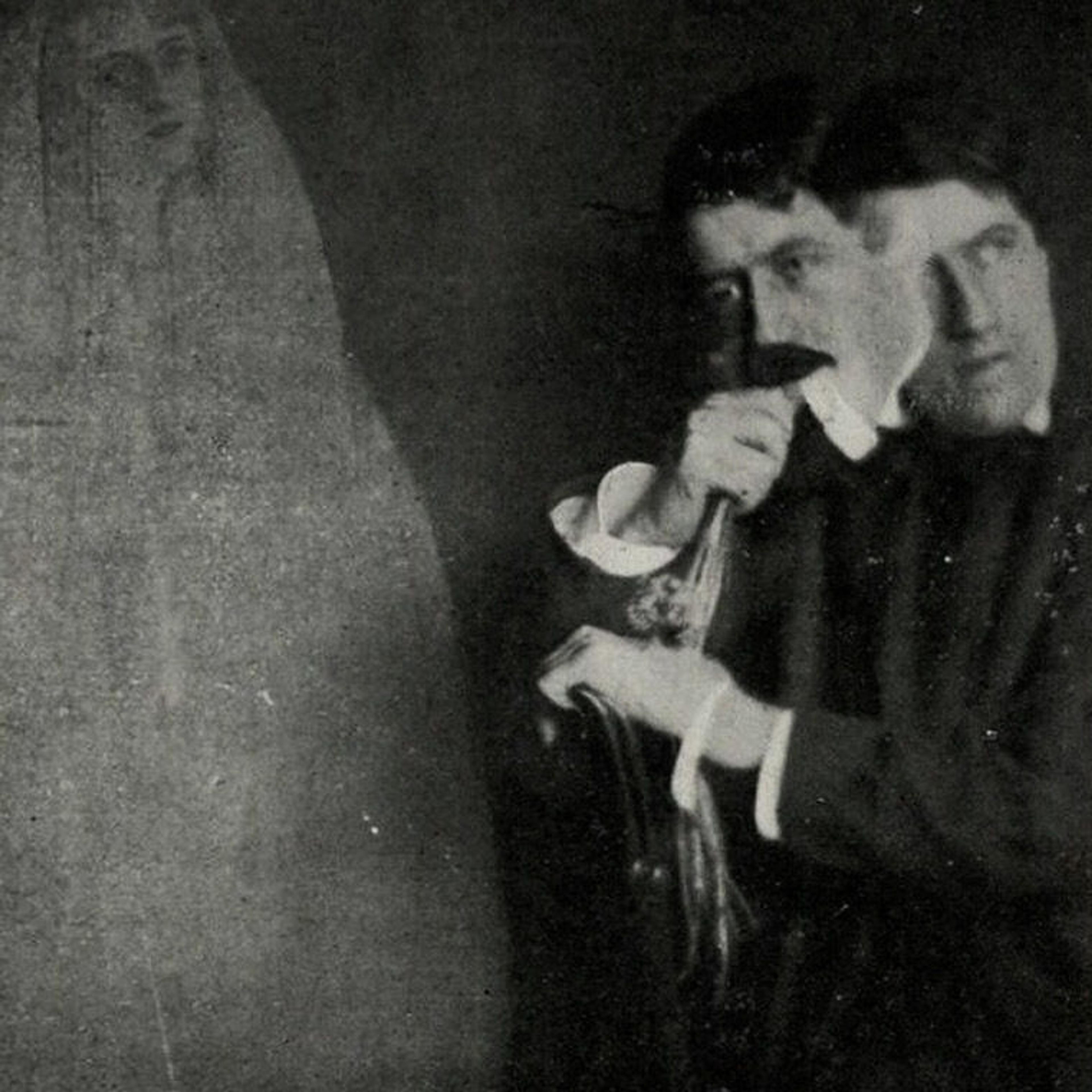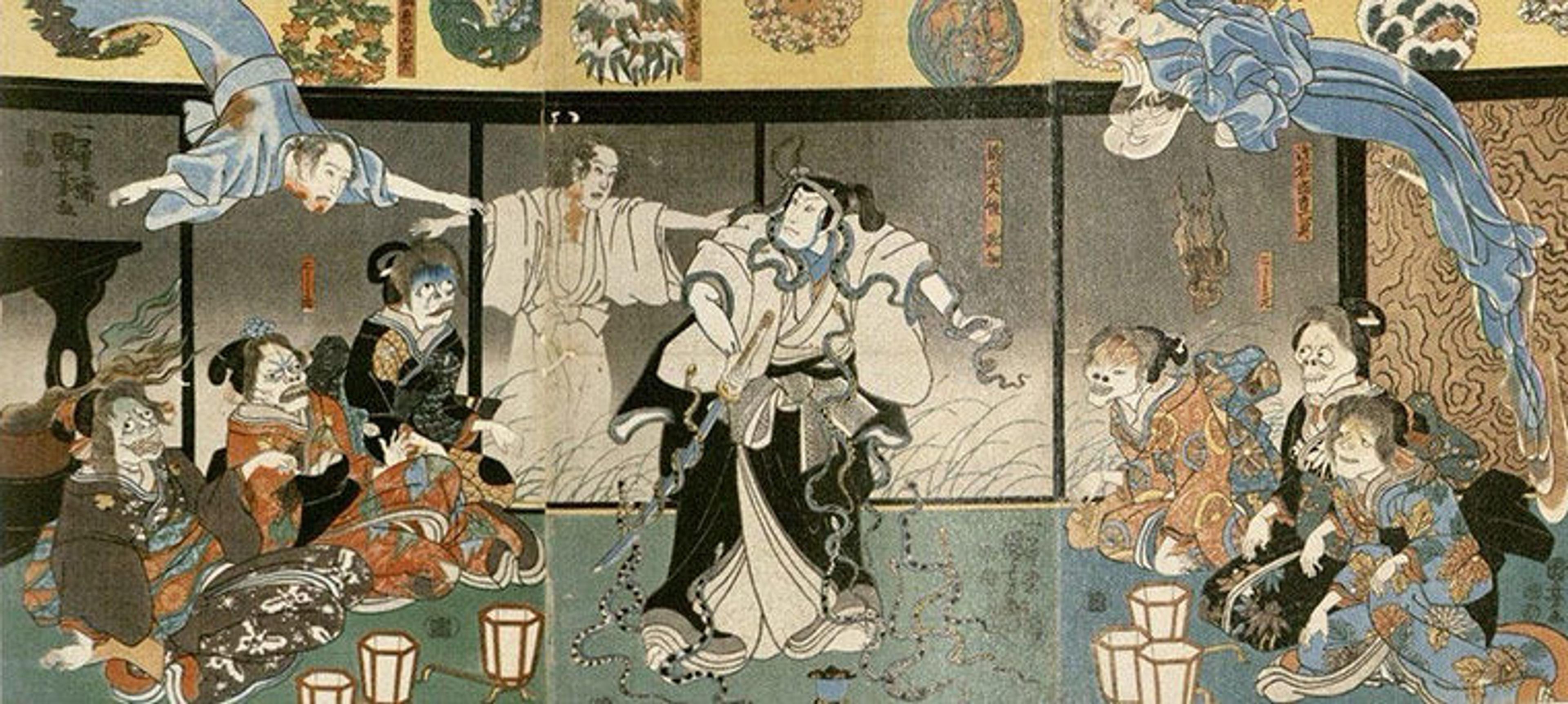
The spirit-heavy tableau The Ghost of Asakura Togo by Japanese artist Utagawa Kuniyoshi. From Fukuoka City Museum, Japanese Ghosts and Eerie Creatures. Fukuoka-shi(?): Yurei Yokaiga Daizenshu Jikko linkai, Heisei (24. 2012)
Recently, a Watson Library work study student approached me and asked an all-important question: "How haunted are the stacks?" As someone with a lifelong fascination with all things paranormal, this was a concern I was thrilled to address. Reality, however, can sometimes be a letdown, and unfortunately my answer was something like, "I hope very haunted, but I just don't know." In truth, I probably could have answered with a little more certainty. Despite having never personally encountered a representative from beyond while closing the Watson stacks each weekday evening, a wide array of spirits do reside between the pages of many of our titles, a sampling of which I would like to highlight here.
One of the more popular representations of ghosts in art—and the subject of a 2005 Met exhibit—is spirit photography. This photographic quirk originated in the 1860s, when photographer William H. Mumler double-exposed a photo by accident, and it soon grew into a lucrative, if hoax-filled, market. Watson Special Collections title La Photographie Transcendantale: Les êtres et les Radiations de L'espace is a defense of the medium, with plenty of standard spirit photos and case studies as evidence.
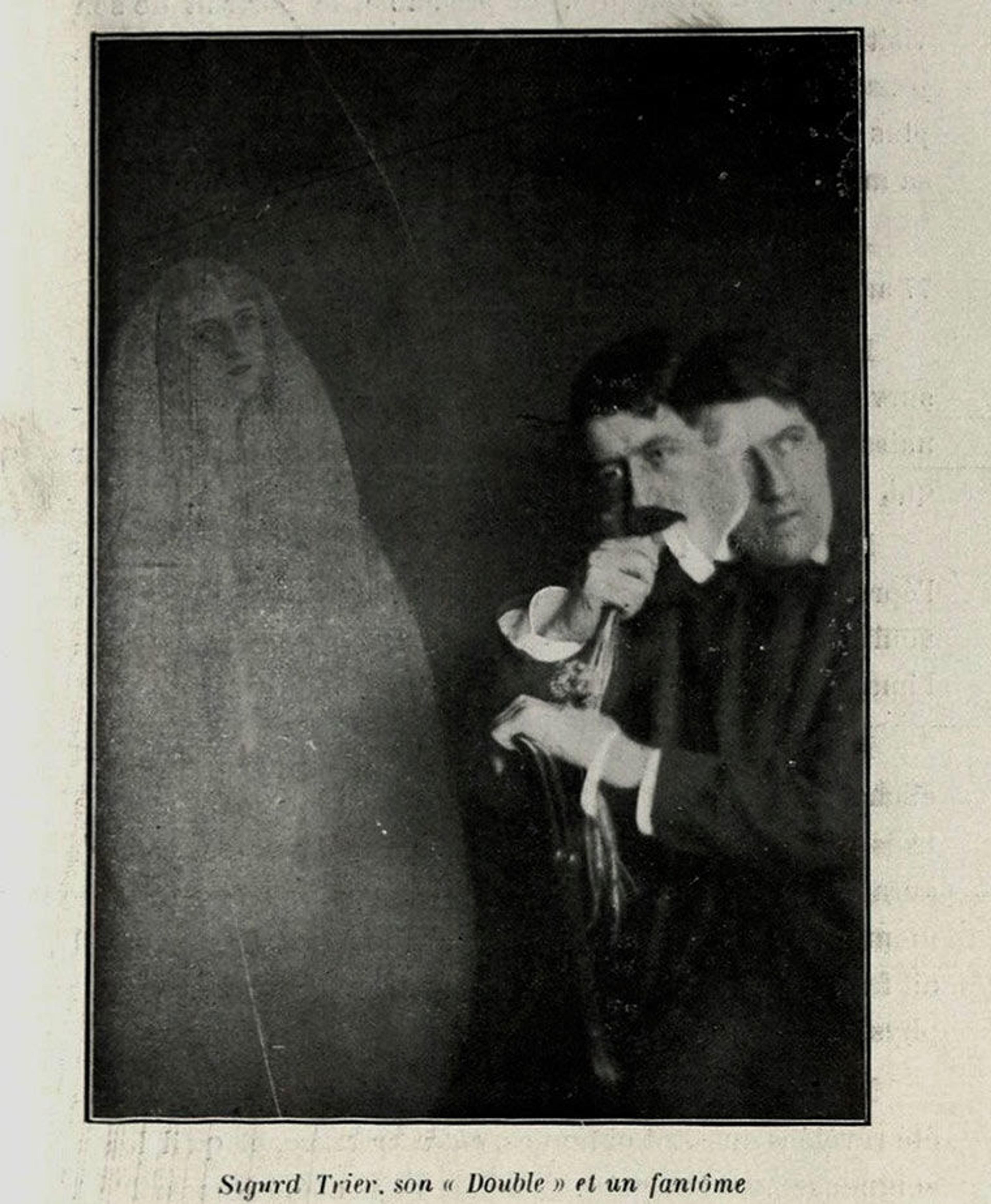
La Photographie Transcendantale: Les Êtres et les Radiations de L'espace (Paris: Librarie Nationale, 1910). Gift of Friends of the Thomas J. Watson Library
Spirit photography had a few well-known proponents, as well as skeptics. Among the former was the spiritualist and artist Georgiana Houghton, who participated in séances during which she created works through automatic drawing—a process in which the hand is believed to be directly assisted by spirits. In Houghton's case, these were not just any spirits; she attested that some of her proto-abstract watercolors and drawings were guided to completion by the ghosts of Titian and Correggio. Along with Hilma af Klint and Madge Gill, Houghton is one of a number of artists who used séances to create art, but Houghton is allegedly the first to do so. Unfortunately, due to her alliance with some of the shiftier spirit photographers, the legitimacy of Houghton's claim that her work being was an act of the spirit world has been questioned in some circles.
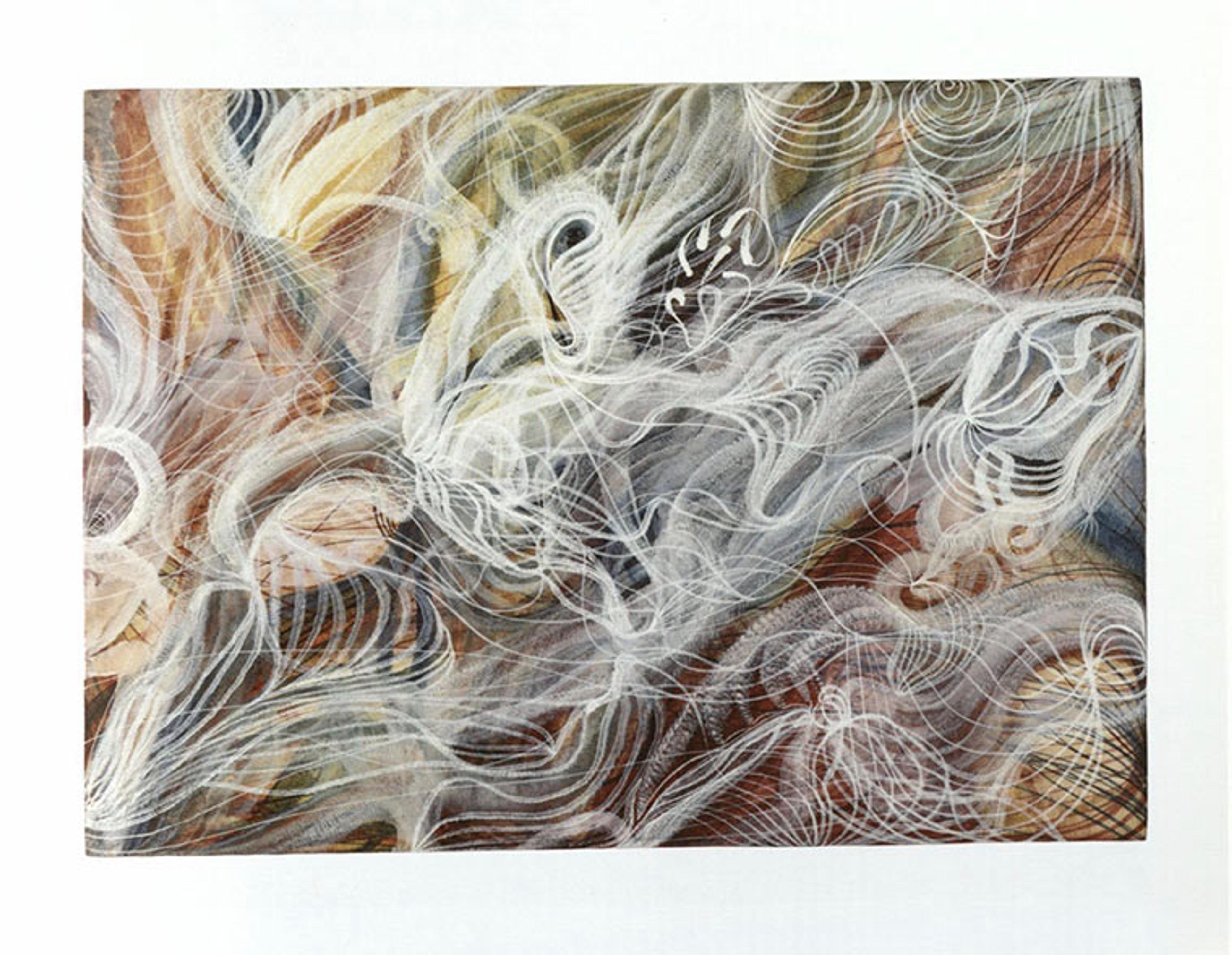
Georgiana Houghton's The Love of God from Simon Grant, Georgiana Houghton: Spirit Drawings (London: Paul Holberton publishing, 2016)
Other artists, like the painter Albert von Keller, were inspired both by spirit photography and "auto-suggestive" states to create works of art. An exhibiting portraitist and co-founder of the Munich Secession, von Keller joined the misleadingly named Munich Psychological Society in 1886. His work began to incorporate paranormal themes after joining this parapsychological group. Von Keller's paintings are unique in that they depict mediums themselves rather than what mediums conjured.

Von Keller's painting of the anonymous medium "Lily." From Albert von Keller, Séance: Albert von Keller and the Occult (Seattle, Wash.: Frye Art Museum: Distributed by University of Washington Press, 2010)
Japanese art is rife with supernatural creatures, ghosts included. Yurei, which roughly translates to "faint spirit," is a unique class of supernatural beings specific to Japanese folklore. Yokai, a more general classification that encompasses a plethora of frightful creatures, are represented in Watson titles such as Japanese Grotesqueries, which features chapters on "female ghosts," "ghouls and skeletons," "murder," and "fabulous creatures," to name a few. Another offering on yokai and yurei, Japanese Ghosts and Eerie Creatures, is flush with grand and grotesque images of many beings you wouldn't want to meet after dark.
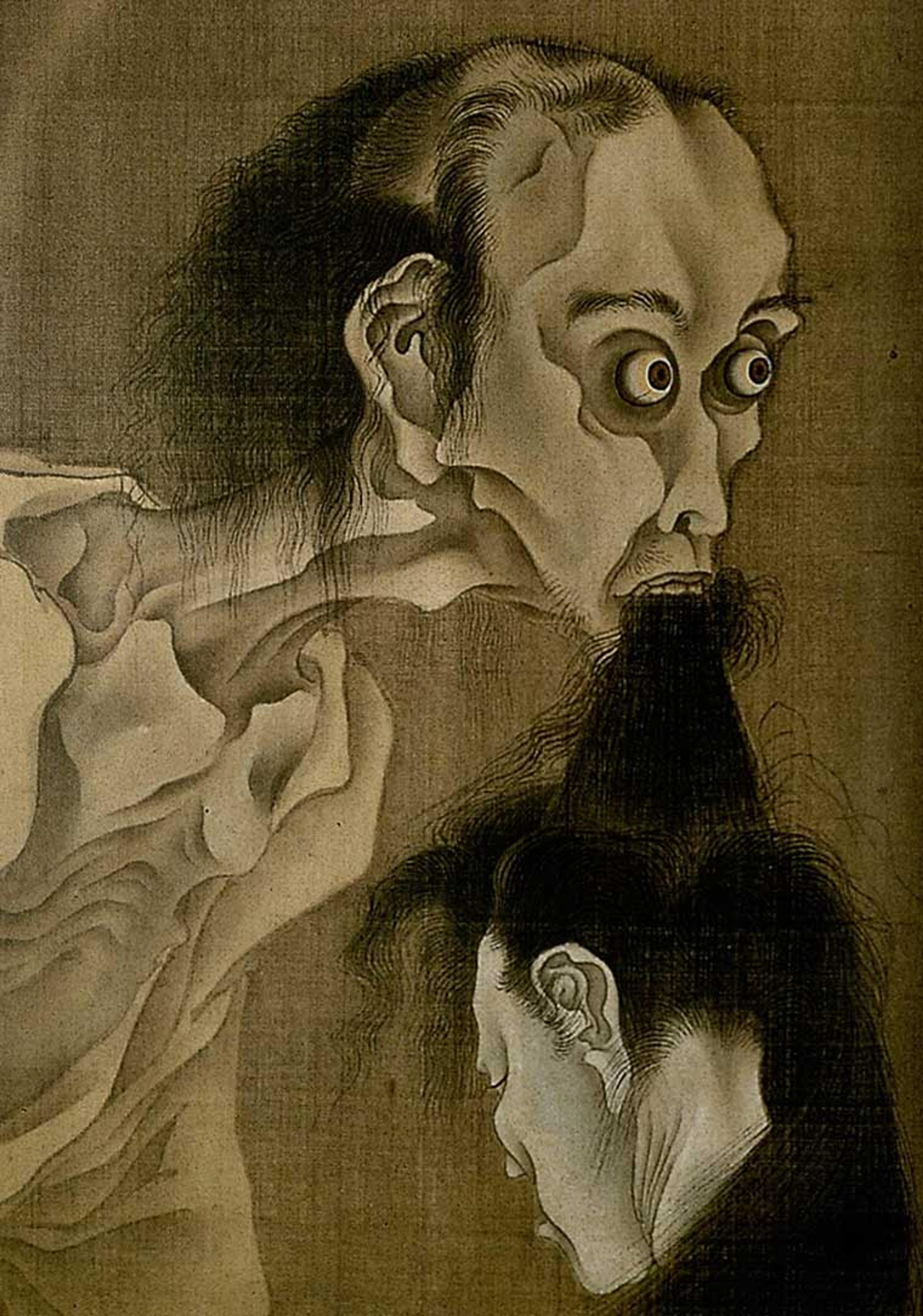
Detail from A Ghost Holding a Man's Head in His Mouth by Kawanabe Kyosai (1831–89). From Fukuoka City Museum, Japanese Ghosts and Eerie Creatures. Fukuoka-shi(?): Yurei Yokaiga Daizenshu Jikko linkai, Heisei (24. 2012)
The world of the paranormal continues to inspire artists in many different ways, as evidenced in Blur of the Otherworldly: Contemporary Art, Technology, and the Paranormal. The book, from the exhibition of the same name, features twenty-five artists employing new technologies to explore the possibility of a world beyond our own. Among the artists featured is Jeremy Blake, whose digital animation, Winchester, was part of Everything Is Connected: Art and Conspiracy an exhibition at The Met Breuer last year. This particular piece concerns the notoriously haunted Winchester Mystery House.
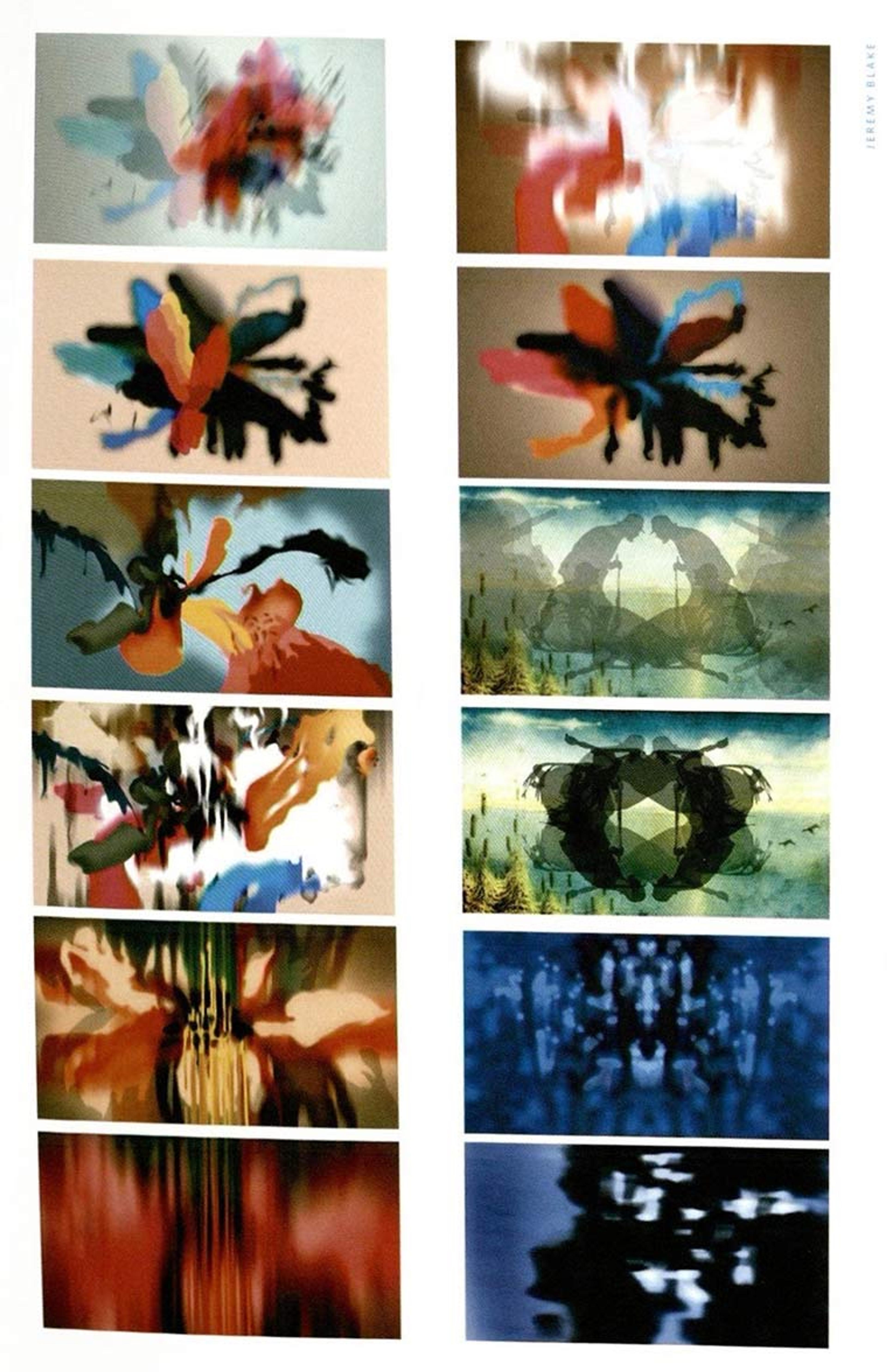
Jeremy Blake's Winchester. From Mark Alice Durant, Blur of the Otherworldly: Contemporary Art, Technology, and the Paranormal (Baltimore, MD: Center for Art and Visual Culture, 2006)
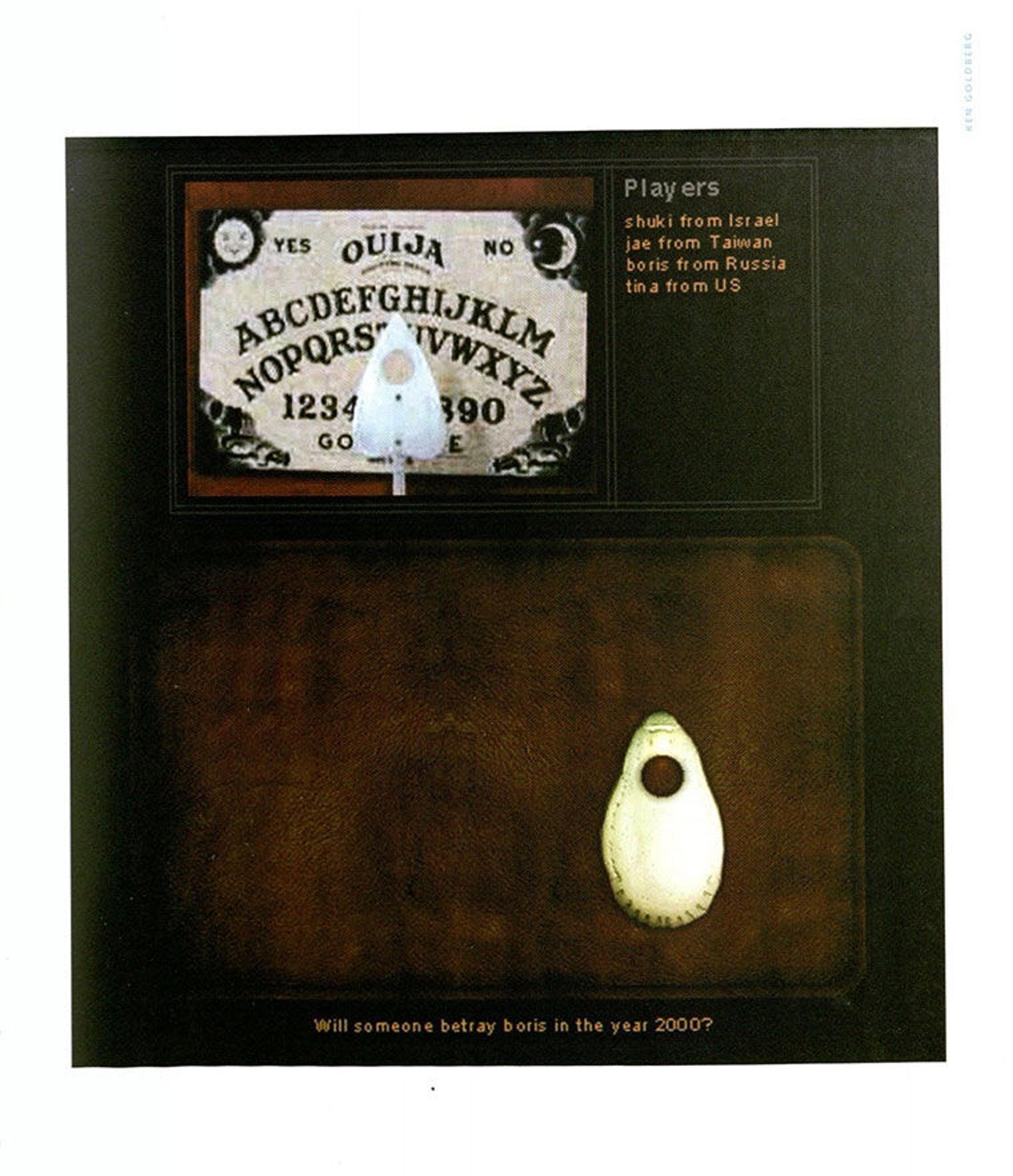
Ouija 2000, an online Ouija board by Ken Goldman. From Blur of the Otherworldly: Contemporary Art, Technology, and the Paranormal (Baltimore, MD: Center for Art and Visual Culture, 2006)
Further hauntings can be found in Haunted Houses, by Corinne May Botz. This monograph features photographs of more than eighty purportedly haunted houses around the United States. These eerie, evocative compositions are interspersed with testimonials from homeowners who have encountered spirits in the houses depicted.
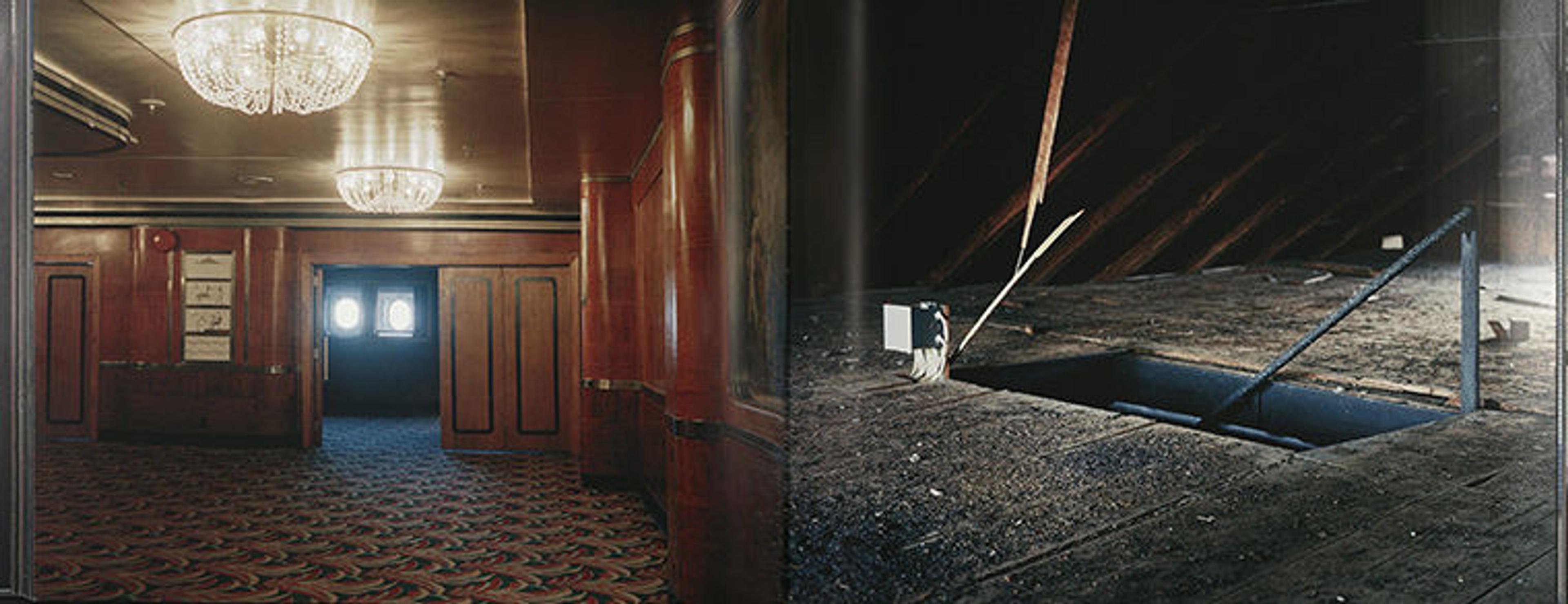
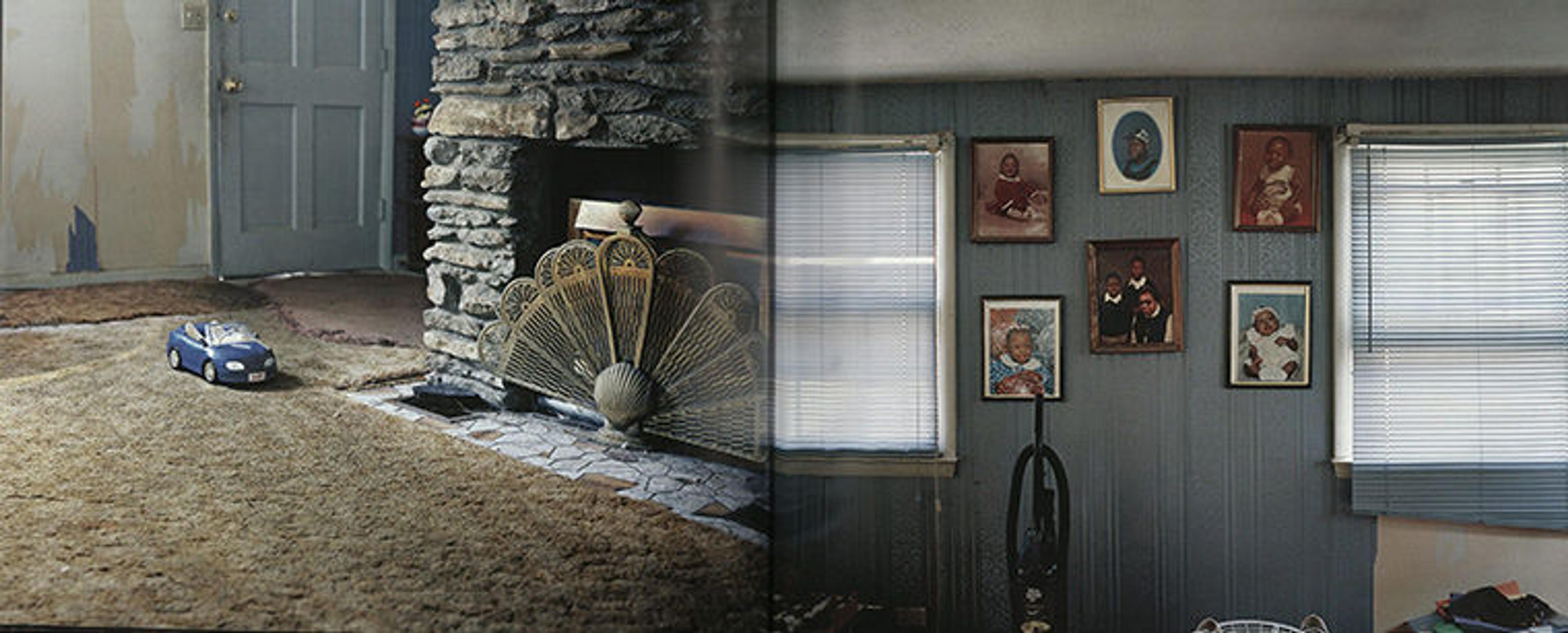
Two full-page spreads of haunted homes from Corinne May Botz's Haunted Houses (New York: Monacelli Press, 2010)
Between 2010 and 2012 Patrick Mimran painted his Ghosts series, comprised of 104 works that were inspired by a ghostly encounter during a trip to India. Mimran has an immersive intention for these works, and has said, "You should be receptive and open to discover them. The same is true for any type of metaphysical or paranormal activities; you should have a certain openness and sensitivity in order to break the barriers to having these types of experiences."
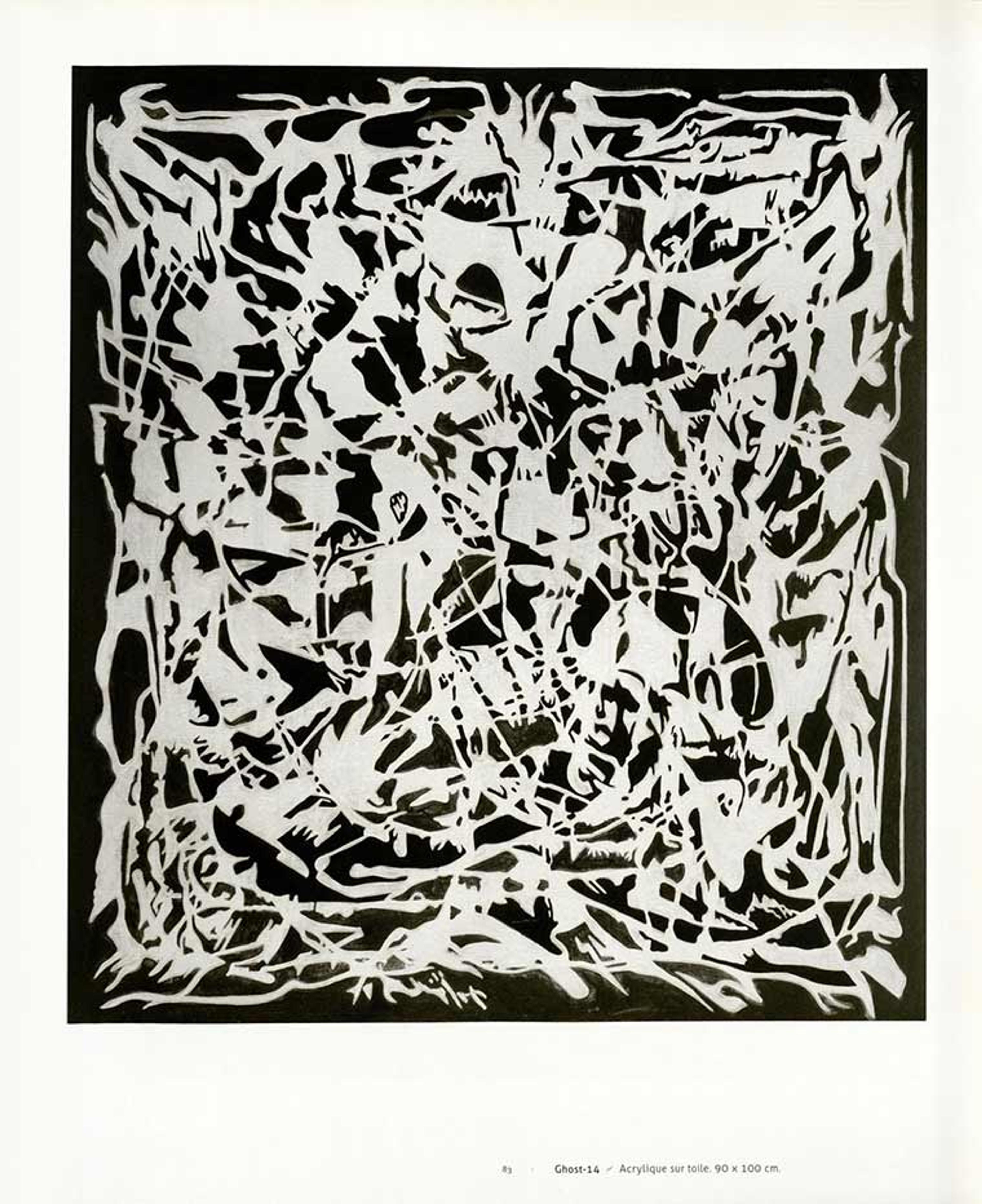
Patrick Mimran, Ghosts (France: Haute-Rive Publishing, 2013)
"A hybrid between group therapy, ceremonial magic, a séance, a circle jerk and a quilting bee," is how artist A. A. Bronson describes the performances that serve as the basis for Queer Spirits. The book provides evidence of site-specific performances—held in locations such as Winnipeg and Fire Island—in which queer and marginalized spirits were ritually invoked. The book also features a number of vintage spirit photos from the collection of famous spiritualist Thomas Glendenning Hamilton, printed in phosphorescent ink.
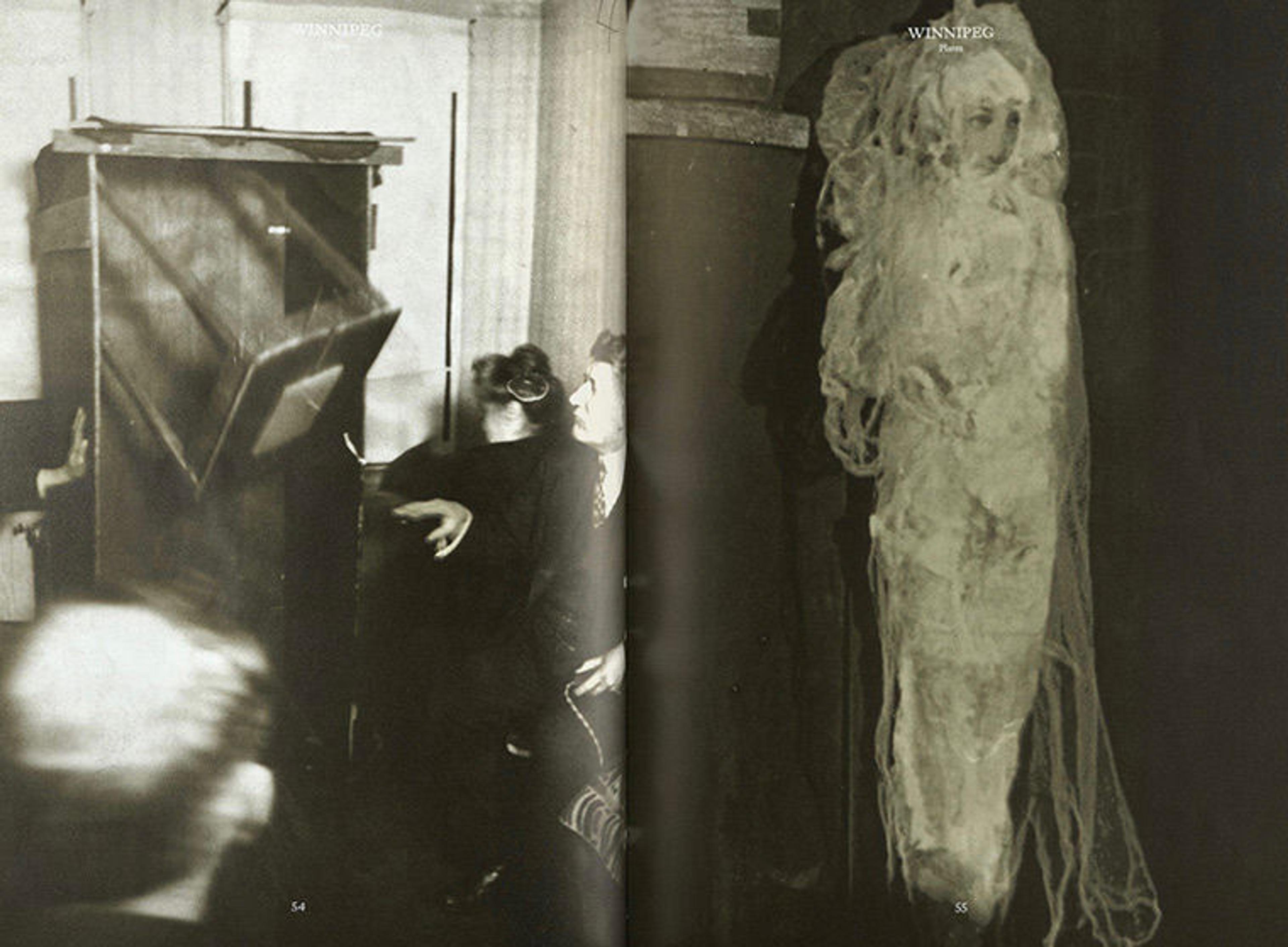
Séance photos from the Hamilton Family fonds, University of Manitoba Archives and Special Collections, featured in A.A. Bronson and Peter Hobbs, Queer Spirits (New York: Creative Time; Winnipeg, Man.: Plug In Editions; Zurich: JRP/Ringier, 2011)
Lastly, for those just looking for a good, old-fashioned ghost story, our special collections are home to a few classics, including Washington Irving's The Legend of Sleepy Hollow and Modern Ghosts, a translation of the works of Guy de Maupassant. George MacDonald's fantasy work Lilith, while not purely a ghost story, does feature a haunted library and just might cause you to regard the Watson Library Reading Room in a different light.
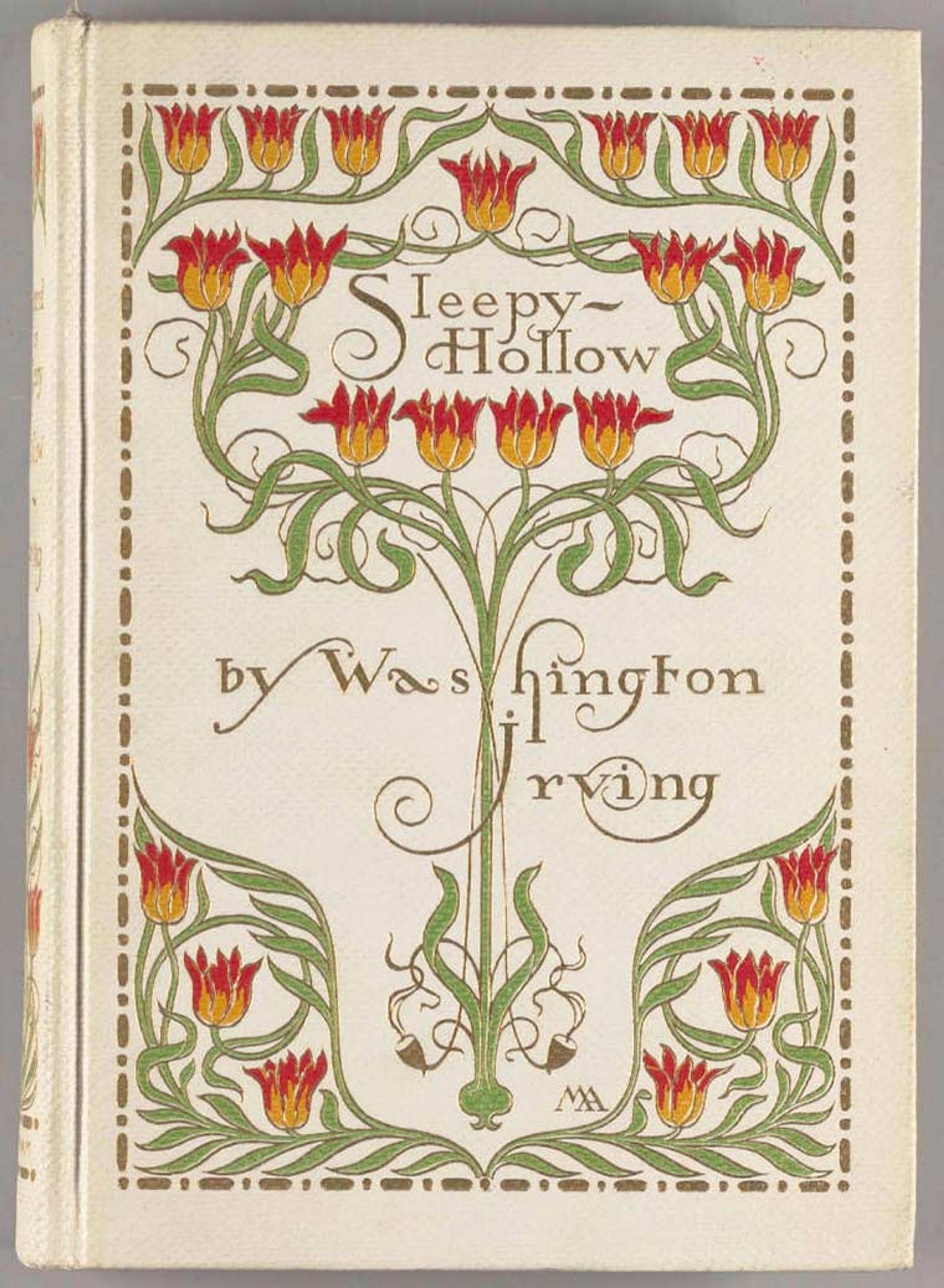
Washington Irving, The Legend of Sleepy Hollow (New York: G.P. Putnam’s Sons, 1899)
